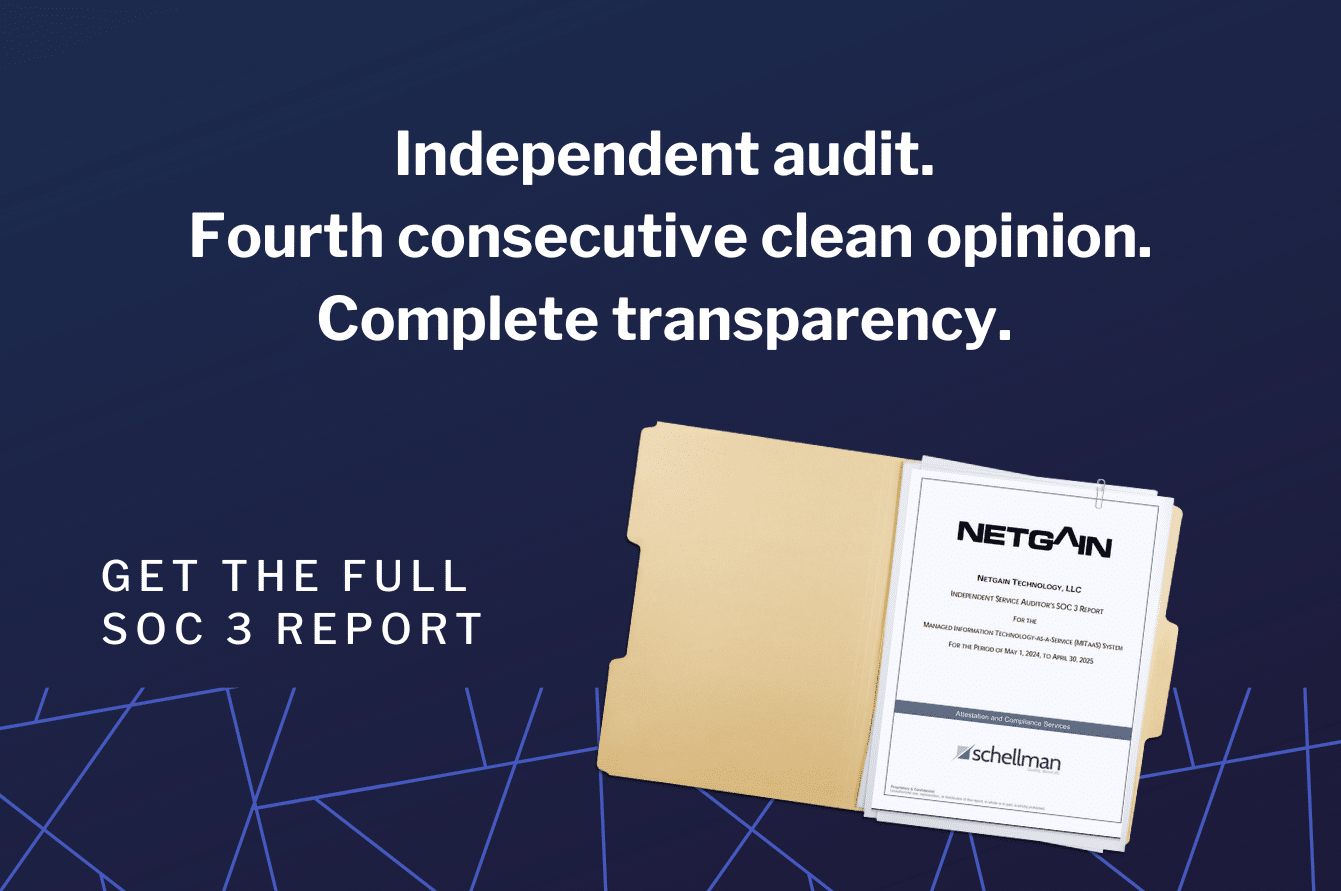If you’ve evaluated a managed IT or cloud provider recently, you’ve probably heard the phrase “SOC 2 compliant.” It’s a staple in sales decks and proposals — but what does it really mean? For CPA firms navigating cybersecurity risks and compliance obligations, understanding SOC 2 and SOC 3 reports can help separate MSPs who talk about security from those who can prove it.
SOC reports weren’t built for marketing. They were built for auditors.
SOC stands for System and Organization Controls, a framework developed by the American Institute of Certified Public Accountants (AICPA). While the name might sound like it’s meant for financial systems (and it once was), it’s now one of the most widely accepted standards for evaluating IT service providers — especially those that manage sensitive data or infrastructure for firms that provide professional services.
A SOC 2 report evaluates how a provider manages things like access controls, system uptime, backup processes and data protection. The controls are mapped to five Trust Services Criteria: security, availability, processing integrity, confidentiality and privacy. These are the same principles you’re expected to uphold under IRS Publication 4557 and the FTC Safeguards Rule — so it makes sense to expect the same from your partners.
Type I vs. Type II: One-day snapshots vs. real-world validation
If a vendor says they have a SOC 2 report, it’s worth asking: Which type?
- Type I covers how controls are designed on one particular day or a single point in time.
- Type II goes further — it tests whether those controls were actually in place and operational over a full period (usually 12 months).
In short: Type II is the gold standard. It means the MSP didn’t just write a policy once — they followed it, enforced it and could prove it every day throughout the year. That includes everything from log monitoring to incident response to system availability during peak client deadlines.
SOC 3: The version you can actually share
A SOC 3 report is a public-facing summary of a SOC 2 Type II audit. It doesn’t include sensitive technical details but still gives you the same opinion from the independent auditor. It’s the report you can review without signing an NDA — and the one your insurance provider, client procurement teams or internal stakeholders may ask for as part of due diligence.
Why should your MSP have one?
MSPs love to talk about “layered defense,” “24/7 monitoring” and “zero trust.” But if they’ve never gone through a third-party audit, how do you know their controls actually work?
A clean SOC 2 Type II report tells you:
- Their policies are not just written — they’re followed
- Their security systems are monitored, tested and reviewed
- Their internal team is accountable for keeping your data protected
- Their uptime and incident response claims are backed by evidence
This matters more than ever. IBM’s 2024 Cost of a Data Breach Report found the average breach now costs US $4.88 million — and the professional services sector is consistently one of the most targeted industries.
How to read a SOC report like a CPA
When reviewing a report, ask yourself:
- Does the scope include the services you’re using (e.g., hosted desktops, cloud file storage, cybersecurity services)?
- Is the opinion unqualified (i.e., no exceptions)?
- Does the audit period reflect real time under real conditions, not just a one — day snapshot?
If the answer to any of those is “no” or even “maybe,” it’s fair to push for clarity. You wouldn’t rely on vague assurances in an audit trail — you shouldn’t in your IT partnerships either.
Why Netgain invests in these audits every year
We don’t pursue SOC audits because clients ask — we do it because it’s the right way to run a security-focused MSP. For the fourth year in a row, Netgain received an unqualified SOC 2 Type II opinion (auditor-speak for a clean bill of health) covering security, availability and confidentiality for the full audit period (May 1, 2024 through April 30, 2025). Our public-facing SOC 3 report is available now, and the full report is available to clients under NDA.
The bottom line
If your firm is responsible for safeguarding taxpayer data, financial records or other regulated client information, your IT partner plays a direct role in your risk profile. A SOC report isn’t a guarantee of perfection, but it is one of the most reliable ways to understand whether your MSP is structured to protect your data — not just claim they can.
Ready to review Netgain’s 2025 SOC 3? Download the report here.
That same commitment to layered, audited security led us to develop Nexus360 XDR™ — an extended detection and response platform that builds on these controls and brings together endpoint, cloud and network signals to strengthen how we detect and respond to threats. Learn how Nexus360 XDR can support your firm’s security.
